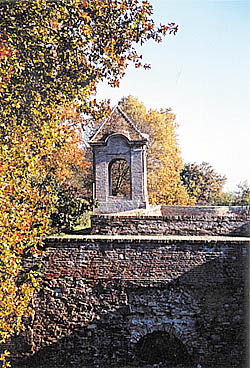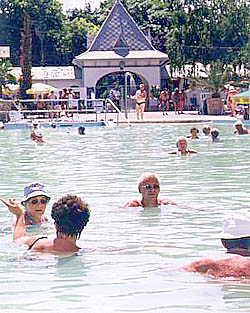|
Although you can find various forms of landscape from mountains to plains in South-Transdanubia, the most typical forms are the hills divided by valleys in the region. In the region stretching from Lake Balaton to the river Dráva and surrounded by the Danube and the Zalaapát ridge, flat areas such as the valley of the Danube alternate with higher hills like the Mecsek or the Villány hills arising suddenly from the land. The mild, Mediterranean-like climate having more precipitation than in the Great Hungarian Plain is favourable for rare plants such as the sweet chestnut, the fig or one of the most beautiful wild flowers of the country, the peony of Bánát.
In Mohács, in the scene of the battle of 1525 you can find a monument commemorating the 150-year Turkish occupation, while in Szigetvár, which was defended by Miklós Zrínyi against the huge Turkish army, a monument was erected for the heroes of the fights. Apart from the Turkish architectural relics including the mosque in the main square of Pécs, monument buildings from other periods have also been preserved: the old Christian crypts have already become part of the World Heritage, but it is also worth visiting the fortified castle of Siklós, which is one of the most intact castles of the country, or the Serbian Orthodox monastic church in Grábóc. In the 18th century Serbs and Germans settled down in the territories which became uninhabited after the Turks had been expelled. This variety of nationalities still exists in the region. The programmes preserving traditions still attract many visitors: the most famous is the unique carnival of Mohács called Busójárás, but the church feasts and cultural festivals also make the life of the region more colourful.
After attending various programmes you can visit the thermal bath of Harkány or you can taste one of the delicious wines of Villány. Or simply you can go walking and climbing the gentle slopes of Somogy country and Zselic. The region is rich in animals, too. Many kinds of birds and mammals hide in the flood area of the Danube and in the thick hornbeam and oak forests of the hills: e.g. the black stork, the egret or the deer. Nature protection is provided by the Danube-Dráva National Park, the most beautiful part of which is the forest of Gemenc. The forest provided shelter for not only the animals, but also for the highwaymen in the past. Their memory is still living: on the fringe of the forest of Vitorág there are always fresh flowers put on the grave of a famous highwaymen called Pali. But in the villages hidden in the hills visitors can find other treasures such as Ibafa, famous for its Pipe Museum, or a village near Szekszárd called Hőgyész, which used to provide ermine for the royal court. (The word "hőgy" refers to the small animal similar to the weasel.) Apart from the natural beauties, South-Transdanubia is rich in historical and cultural traditions, too. The poet-diplomat Janus Pannonius, who was the bishop of Pécs, too, made the humanist-Renaissance ideas and culture well-known here in the 15th century. Several relics from the Turkish times can be found in the region, as well.
Lodgings in Southern Transdanubia:
Sights in Southern Transdanubia: |
Southern Transdanubia map nagyítása >>
in Southern Transdanubia:
|
|
|
Hungary - Southern Transdanubia |
|
|
|
||
|
Saturday, 5. July 2025. - 19:13:10 |
||


